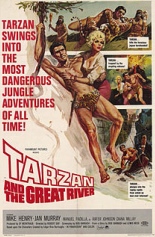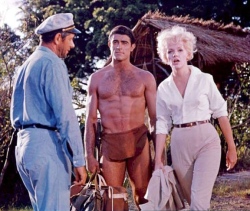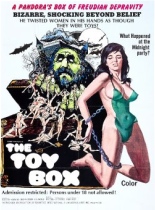
 The Toy Box is an utterly bizarre mix of sex and horror, and I fully admit to watching it only because Uschi Digard is in it, as I’ll see anything to which she and her charms lent time. Uschi isn’t the star, but she does have the film’s most memorable scene. (Seriously, have you seen her? How could she not?)
The Toy Box is an utterly bizarre mix of sex and horror, and I fully admit to watching it only because Uschi Digard is in it, as I’ll see anything to which she and her charms lent time. Uschi isn’t the star, but she does have the film’s most memorable scene. (Seriously, have you seen her? How could she not?)
The story is about an old scraggly guy who looks not unlike Burl Ives. He has no eyes, sits in a dark room and telepathically has various young people carry out his most twisted sexual fantasies. Said fantasies include having a woman pleasure herself with a new dildo (“It turns on easy,” she says. “Hopefully it will do the same for me.”); having a fat guy butcher and copulate with dead women; and having a bunch of partygoers have an all-out orgy, despite the severed heads that pop up from nowhere and bodies that fall dead without explanation.
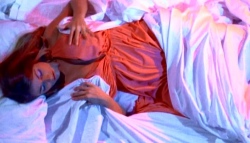 In Uschi’s aforementioned scene, she goes to bed, only to have the bed come alive to feel her up and before you know it, she’s screwing the sheets.
In Uschi’s aforementioned scene, she goes to bed, only to have the bed come alive to feel her up and before you know it, she’s screwing the sheets.
Reportedly, The Toy Box boasts a must-be-seen-to-be-believed twist ending, but unfortunately, the copy I was watching pixelated and froze before I could reach it. If what I did see was any indication, I’m sure it’s wild. But if you’ve seen the ending and can fill me in, please do. In the meantime, I’m on to more Uschi … —Rod Lott

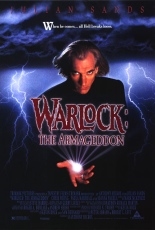
 Watching this sequel to 1991’s
Watching this sequel to 1991’s 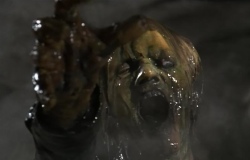
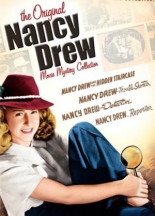
 Being the most pure mystery of the bunch,
Being the most pure mystery of the bunch, 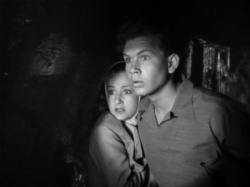
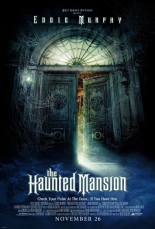
 Remember when Eddie Murphy used to be funny and he did that routine about how Hollywood doesn’t make horror movies with black people because they’d leave a haunted house at the first sign of suspicious goings-on? Well, now that Murphy is no longer funny, they made that movie. And he must no longer be black, either, because he goes in and stays in that haunted house.
Remember when Eddie Murphy used to be funny and he did that routine about how Hollywood doesn’t make horror movies with black people because they’d leave a haunted house at the first sign of suspicious goings-on? Well, now that Murphy is no longer funny, they made that movie. And he must no longer be black, either, because he goes in and stays in that haunted house.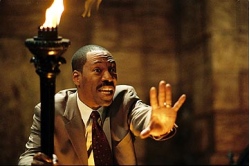 Skeletons come alive, apparitions appear everywhere, Jennifer Tilly’s disembodied head resides in a crystal ball, and yet nothing of significance happens in the entire hour and a half. Nothing but ass-numbing, migraine-inducing pain. This one makes any of the nonsensical
Skeletons come alive, apparitions appear everywhere, Jennifer Tilly’s disembodied head resides in a crystal ball, and yet nothing of significance happens in the entire hour and a half. Nothing but ass-numbing, migraine-inducing pain. This one makes any of the nonsensical 